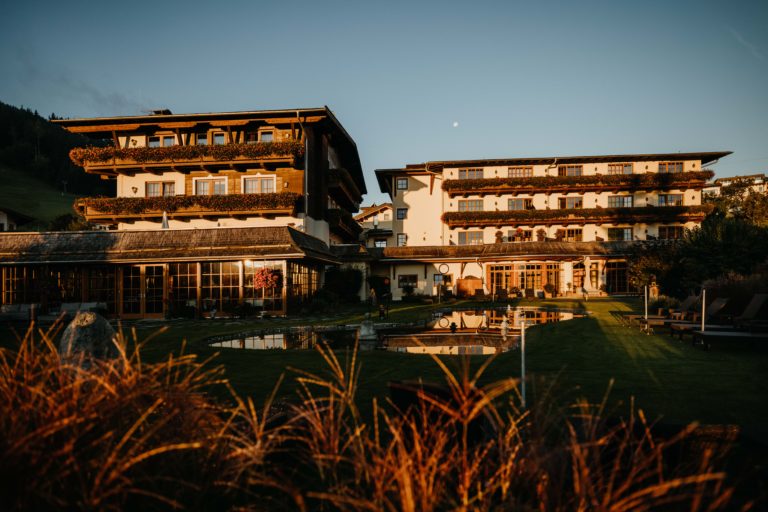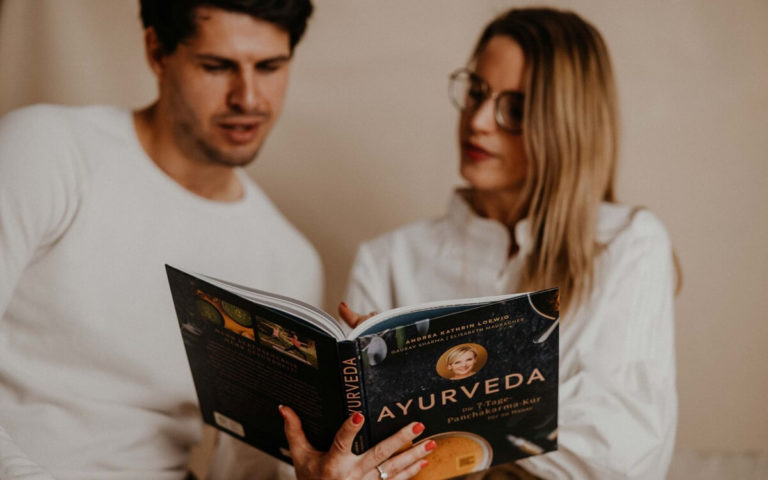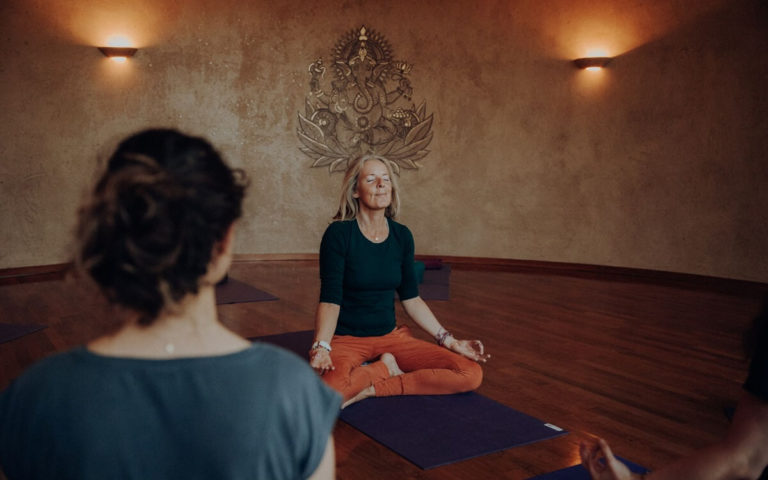Osteoarthritis is a slowly progressive wear and tear of joint cartilage and can affect any joint. Symptoms often only appear years later, when the degenerative changes have already progressed. European Ayurveda® helps to combat the symptoms of osteoarthritis and supports recovery with a natural treatment.
Development and causes of osteoarthritis
Osteoarthritis occurs when the cartilage in a joint breaks down. This ultimately causes bone to rub against bone, resulting in inflammatory pain in your joint. There are many reasons for the reduction in cartilage mass.
Healthy cartilage is surrounded by a protective, elastic layer that sits between the ends of the bones like a shock absorber. The cartilage is surrounded by the joint capsule, which produces this protective synovial fluid. The capsule also supplies the cartilage with nutrients.
Regular loading and unloading ensures that the synovial fluid is evenly distributed in the joint and penetrates the cartilage well. Prolonged heavy strain wears down the cartilage and the bones rub against each other. This causes pain and a feeling of stiffness, which often only becomes noticeable years later.
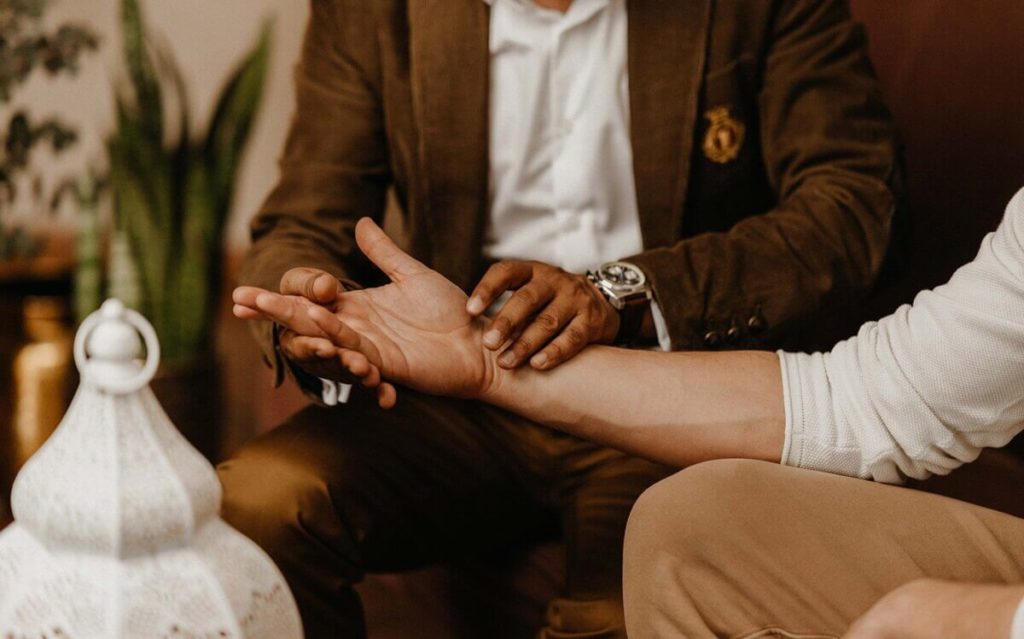

In medicine, a distinction is made between primary and secondary osteoarthritis. In the case of primary osteoarthritis, there is no clear trigger for cartilage wear. The diagnosis can often be traced back to age or too little exercise in combination with a misalignment of the feet or legs. A crooked pelvis or incorrect posture lead to one-sided strain and severe wear and tear.
Secondary osteoarthritis is usually influenced by an event, such as an injury or obesity. In addition, heavy physical exertion or excessive sports can trigger osteoarthritis in the joints.
Treating osteoarthritis with European Ayurveda
The effects of osteoarthritis are considerable and range from stiffness and pain on exertion to permanent pain and inability to move. With the right lifestyle, you can prevent osteoarthritis and influence the course of the disease.
Osteoarthritis from an Ayurvedic perspective
In European Ayurveda®, osteoarthritis is a Vata disease. Increased Vata is caused by years of accumulation of Ama, i.e. too much waste products and toxins. Regardless of which joint is affected by the wear and tear, a reduction in Vata is crucial for alleviating the symptoms.
From the Ayurvedic perspective, the natural balance between loading and unloading is disturbed.
This not only makes regeneration more difficult due to a metabolic disorder, but may even prevent it. Vata has a dehydrating property from which your joints suffer. The aim of an Ayurveda cure is to reduce Vata.
Ayurvedic treatment of osteoarthritis
There are different approaches to how Ayurveda helps with joint pain. A suitable treatment is prescribed individually for you and your body. In addition to external applications with oil and heat, the right Ayurvedic diet is an important point in the regeneration of your body.
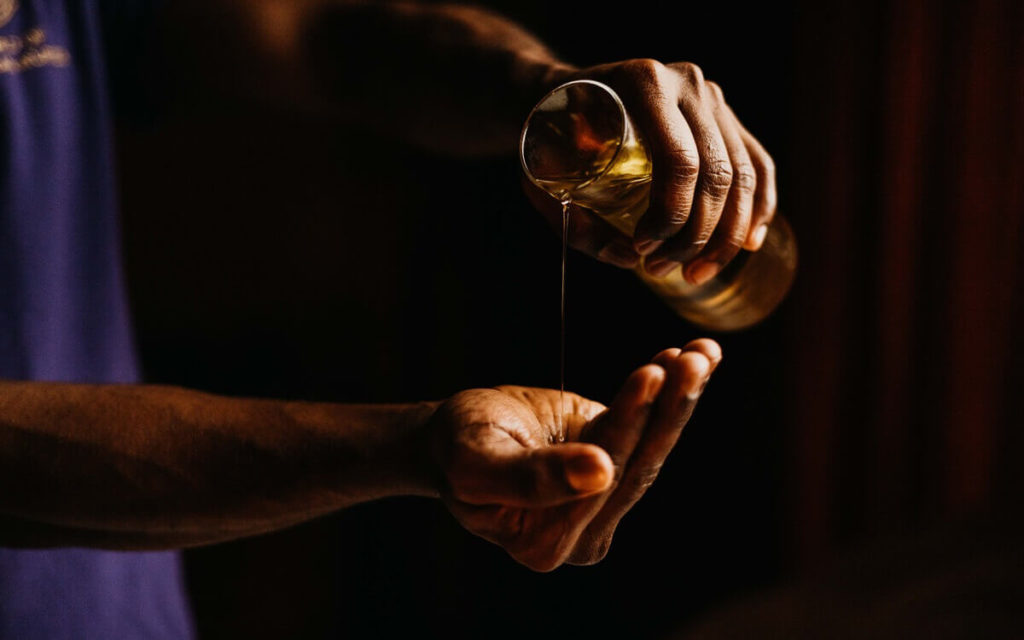

Panchakarma cure with oil
In Ayurveda, osteoarthritis is mainly treated with oil massages, acupressure and marma massages. The special oils reduce Vata and also nourish your tissue. A Panchakarma cure is also often carried out.
The deep cleansing on all levels removes toxins from your body and helps with intestinal cleansing. In addition, external applications with heat and steam are performed to reduce Vata.
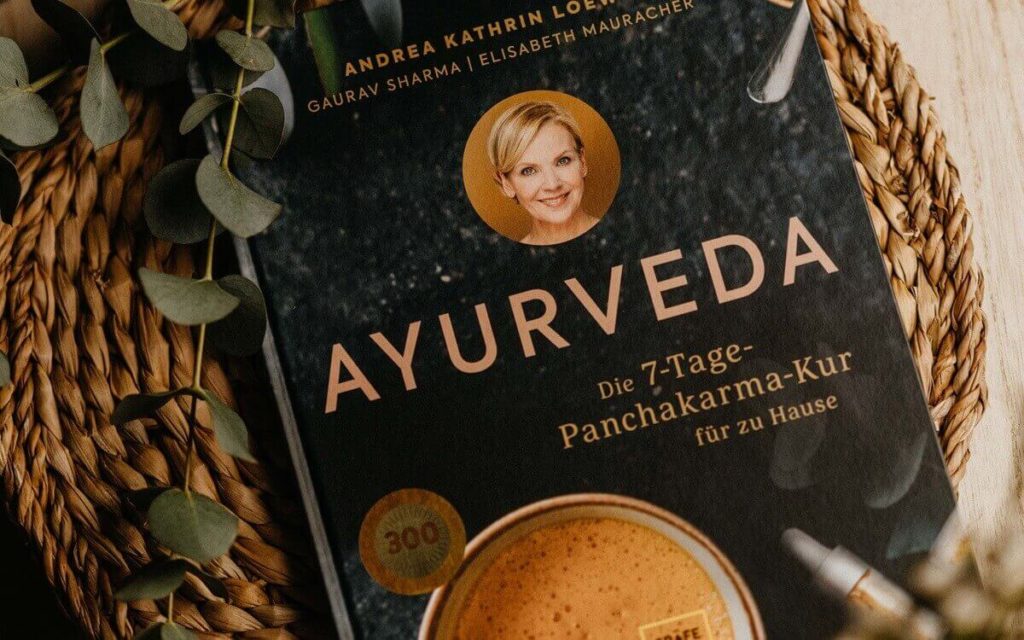

Discover the Panchakarma cure for at home
In our book "Ayurveda: The 7-day Panchakarma cure for at home", our experts show you how you can gently detoxify in 7 days.
Ayurvedic dietary changes: proper nutrition with spices and herbs
A Dosha-appropriate change to your diet also plays a major role. To do this, it is important to first determine your individual dosha type.
Foods that reduce Vata include oily, warm, sweet and salty foods as well as warming spices, nuts and seeds. Drinks are best drunk warm. Dates and figs are excellent snacks.
When preparing your fresh meals, you are welcome to use gheethe purified butter, as a fat. Butter fat is an important source of nutrients and provides your body with plenty of vitamin A, strengthens your immune system and your liver. Ghee also contains anti-inflammatory fatty acids such as linoleic acid and butyric acid.
Medicinal plants have an anti-inflammatory effect in Ayurveda and are often used for treatments. Ayurvedic spices for osteoarthritis can also help to relieve pain, for example:
- Cinnamon
- Ginger
- Star anise
- Cloves
- Cumin (cumin)
- Coriander
- Nutmeg
- Turmeric
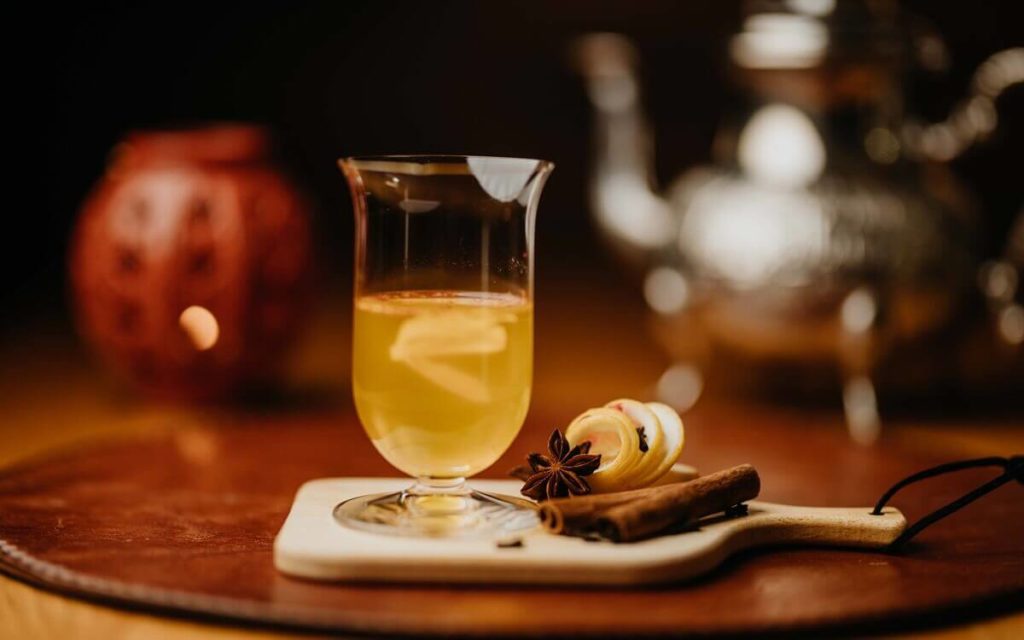

Other proven herbs for internal use in Ayurveda are ashwagandha and yogaraja guggulu. Ask your Ayurveda expert for individual advice on the correct dosage. Lepas, which are compresses made from resins and herbs, have an anti-inflammatory and analgesic effect on osteoarthritis.
Vata disorders are an indication that the digestive fire Agni is unstable or out of balance. Easily digestible foods help to restore the balance here.
The following table provides an overview of a general dietary recommendation for increased Vata:
| Vata-reducing: what you should eat | Vata-boosting: what you should avoid |
| - warm - oily, greasy, moist - sweet - salty - regular meals - slow food - high-quality oils and fats - sweet fruit and other healthy sweets - warming spices - nuts and seeds - nettle seeds | - cold - dry - very hot - bitter - astringent - irregular meals - fasting - lettuce - pulses - highly flatulent foods |
Physiotherapeutic treatment for osteoarthritis
In addition to a change in diet and external applications with oils, the treatment of osteoarthritis is supported by an individualized yoga- and exercise program. The guided physiotherapy exercises can not only prevent osteoarthritis, but also alleviate acute pain.
Avoiding stress, physical and mental overload, cold and wind is important for your osteoarthritis to heal quickly. Give your body the opportunity to recover and regenerate. This will help you return to a pain-free everyday life more quickly.
5 tips: Ayurveda against osteoarthritis in everyday life
With the following tips, you can easily incorporate the Ayurvedic lifestyle into your everyday life. This will strengthen your body and reduce the chance of developing osteoarthritis.
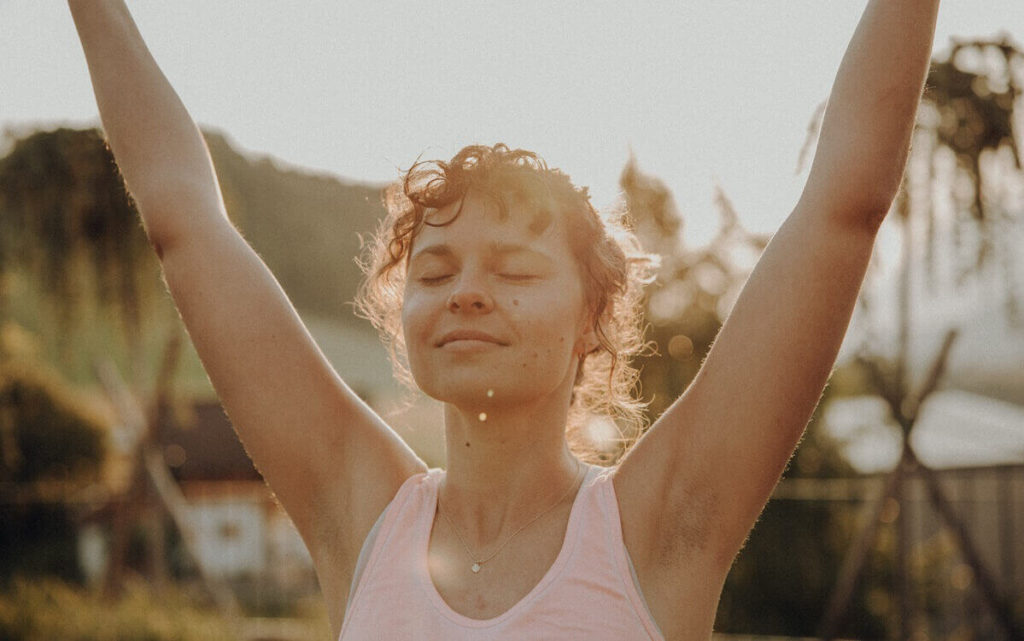

#1: Improve lifestyle
The most important tip is to improve your lifestyle. This includes avoiding too many animal fats, sugary products and white flour. You should also avoid unhealthy stimulants such as alcohol and cigarettes as well as convenience products and fast food. Instead, make sure you eat a fresh and balanced diet with plenty of vitamins, salad and fruit.
A conscious lifestyle also includes a positive mindset. In Ayurveda, confidence and optimism are part of the "nourishment of the human soul". A positive attitude towards life has a positive effect on your body and mind. It therefore has a significant influence on the healing process.
#2: Conscious movement and rest periods
Light movement and breathing exercises in your everyday life release tension, strengthen your flexibility and reduce stiffness. Movement promotes blood circulation, which in turn helps to lubricate the joints. Yoga and swimming sessions are particularly gentle, as they protect and mobilize the joints at the same time.


In addition to exercise, conscious periods of rest are important for you and your body. Avoiding stress is a fundamental point of reference in Ayurveda. Excessive (mental) stress is often the trigger for inflammation and therefore also for osteoarthritis. With regular meditation and breathing exercises, you can consciously help your body to achieve a positive mindset and greater relaxation.
#3: Maintain a healthy body weight
A healthy body weight is particularly important for osteoarthritis in order to relieve the strain on your joints and prevent wear and tear. Weight reduction in osteoarthritis also has a pain-relieving effect on the patient. A conscious lifestyle helps prevent osteoarthritis. An Ayurvedic diet can help you here.
#4: Drink enough
Drinking plenty of liquids in the form of still water and unsweetened teas is an important rule of the Ayurvedic way of life. Alkaline teas such as green, ginger and rooibos tea can have a pain-relieving effect on osteoarthritis.
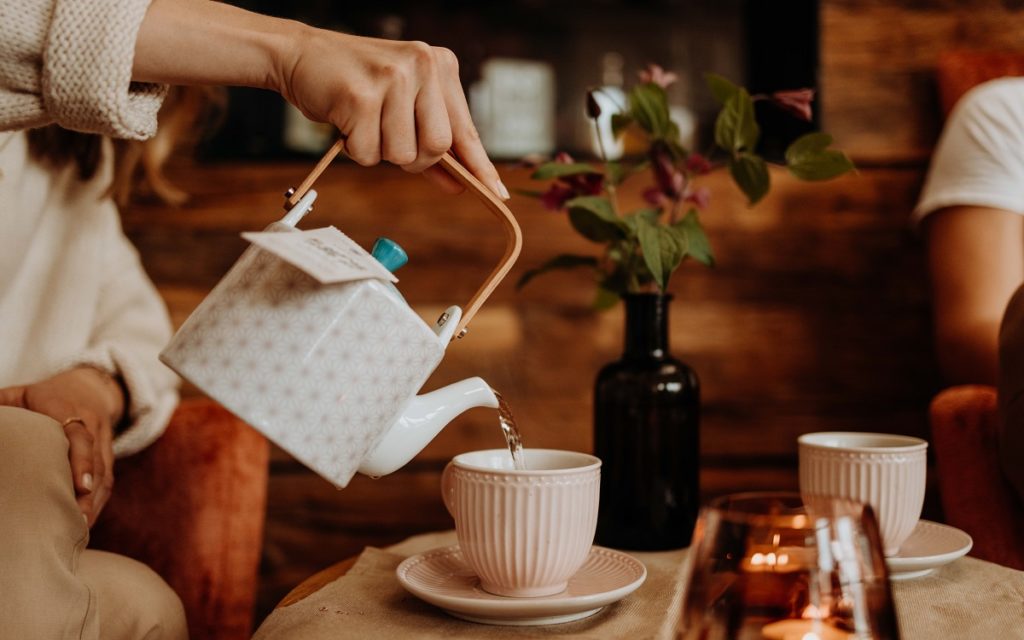

Discover delicious Ayurvedic teas now
Discover the cookbook "Es geht mir richtig gut mit Ayurveda" for at home - with 60 simple and healthy recipes from the European Ayurveda Resort Sonnhof!
#5: Use heat against discomfort
Make sure you consciously relax your body, for example with a herbal bath or in the sauna. Your muscles will relax and the heat will dilate the blood vessels. This reduces swelling and pain and stimulates lubrication of the joints.
Conclusion: Ayurveda for osteoarthritis and joint pain
Osteoarthritis is caused by an excess of Vata. In Ayurveda, external applications and the right Ayurvedic diet are combined to treat osteoarthritis. Gentle and warm oil massages can alleviate the pain. A Panchakarma cure can also help to remove waste products and reduce Vata.
You can use Ayurvedic herbs and spices to relieve pain and boost your metabolism. Vata-reducing foods also help to reduce joint pain in the long term. Ultimately, however, the focus should be on improving your overall lifestyle.
Regular exercise, deliberate rest, less stress, sufficient fluid intake and warmth help to combat osteoarthritis in the long term and can also have a preventative effect.


Ojas in Ayurveda: strengthen your cells and ensure healthy longevity
In Ayurveda, ojas is the life energy that influences our vitality, health and strength. It is therefore essential for healthy living and ageing. You can build up ojas through healthy routines - we show you how to do this in this article.

